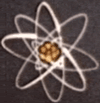|
|
Post by Roxilicious on Aug 7, 2012 21:12:07 GMT -5
work in progress . . .
Mythical creatures are just as important as magic in the world of Destiny Flyers. They were the first to inherit magic from the gods, the first to learn of and practice its power. While it is true that yes, ordinary animals can also learn magic, they don't have the same ability to use it as their mythical cousins, the first to walk the planes of planet Orbis.
Owning a mythical beast proves quite useful in that the owner can draw power from his magical friend. With a stronger connection, the power is even greater. This is useful in times of danger
The most common beasts in the land as well as owned by the people of Osoa would be dragons. There are three types of dragons: domestic, feral, and grand.
Domestic Dragons
These dragons are just as they sound. They are domesticated and owned by people, and they have taken a slightly different evolutionary path from their wild cousins, parallel to the relation between wolves and domestic dogs. There are many breeds of domestic dragons like regular dogs. They are smaller, less magically potent, and physically weaker than their feral cousins, but they are much friendlier, much more loyal, and much more to anger.
Feral Dragons
The wolves of the dragon world, feral dragons are the wild counterpart to their domestic family. They are much larger, much faster (usually), much more adept with their magic, and much more fearsome. Their powers are immense and terrifying, because feral dragons are wild animals and will not hesitate to attack anyone who crosses their path. They are hostile, quick to anger, very defensive, and very solitary creatures. They can easily take down a domestic dragon without much effort. Feral dragons cannot be owned by the people of Osoa; it has been outlawed, not that a mere human could domesticate one in the first place without being killed.
Grand Heyvans
Despite the difference in name, grand heyvans are indeed dragons. They are legendary. In terms of appearance, they look identical to their smaller cousins: reptilian faces with long necks, four legs, two enormous wings, one long tail, and scales. The only difference is sheer size. It's impossible to describe their immensity, for grand heyvans are at least 15 times the size of the feral dragons, absolutely dwarfing them in comparison. It is said that, to get a good estimate of the average size, one must think of the largest feral dragon they have ever seen. That would be the size of a grand heyvan's head.
These dragons have the ability to transcend worlds, traveling from realm to realm and passing through the Void without difficulty. They rarely bother to spend time on Orbis with the mortals, hence they are such a rarity, but many are well known. Each grand heyvan ever documented has its own name and biography, usually many book dedicated to a single dragon. They are obviously impossible to control in any sense, and they are considered demigods. Some are good, some are evil, some are guardians, and some are destroyers. Young children are often read stories about individual grand heyvans. They are to be feared and respected, for they are like gods.
In addition to their strength and magical power, grand heyvans are unquestionable intelligent. They speak the human language, the elf language, the bestial languages, and even ancient languages more fluently than someone who has spoken and studied any given language his entire life. They communicate mostly through telepathy, for their physical voices are said to be like a siren's scream or a banshee's cry.
The only powers above grand heyvans are the powers of the gods.
|
|


